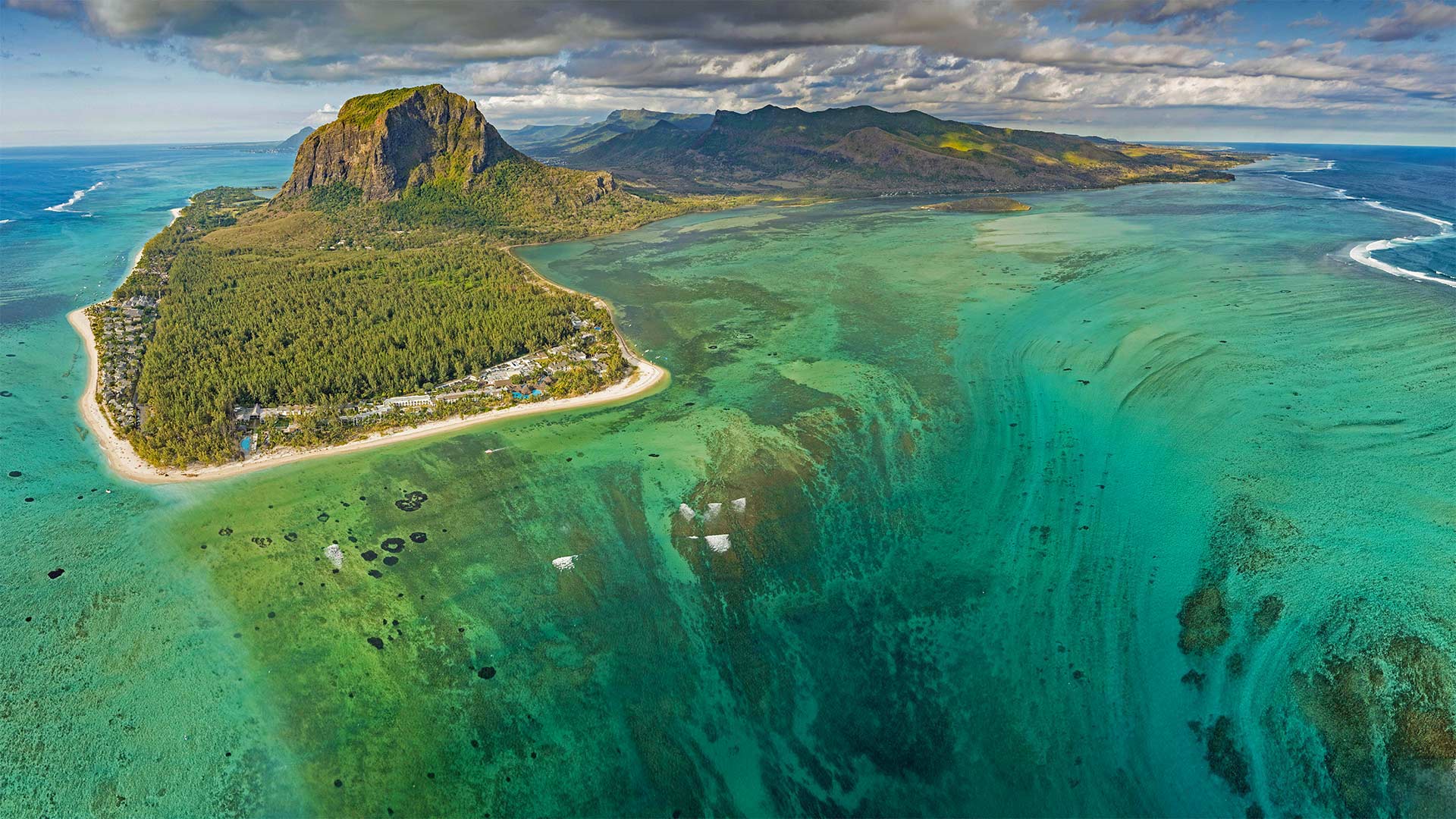莫纳布拉班特山,毛里求斯 Le Morne Brabant, Mauritius (© Hemis/Alamy)

莫纳布拉班特山,毛里求斯 Le Morne Brabant, Mauritius (© Hemis/Alamy)
Getting to the bottom of the underwater waterfall
From this vantage point high over the Indian Ocean, we have a spectacular view of the 'underwater waterfall' formed off the coast of Mauritius. Not a true waterfall, this is an optical illusion—it's really the trails of sand and silt deposits on the seafloor being washed by ocean currents through an opening between coral reefs. But we're probably not alone in thinking at first glance that the ocean is pouring into some massive unseen drainpipe.
Our viewpoint also offers a clear look at the huge basalt monolith in the distance towering over the peninsula called Le Morne Brabant. Originally uninhabited by humans, the island of Mauritius became an important stopover in the slave trade by the 18th century. Some slaves managed to escape while on the island and made their way to the many caves and overhangs on the steep slopes of Le Morne. There, these 'maroons' hid from slave traders and eventually formed enough settlements that Mauritius became popularly known as the Maroon Republic, and Le Morne a symbol of the slaves' resistance, suffering, and sacrifice.
到达水下瀑布的底部
从印度洋上空的这一有利位置,我们可以看到毛里求斯海岸形成的“水下瀑布”的壮观景色。这不是一个真正的瀑布,这是一种视觉错觉,它实际上是海床上的沙子和淤泥沉积的痕迹被洋流通过珊瑚礁之间的开口冲刷。但我们可能不是唯一一个第一眼就认为海洋正在涌入一些看不见的巨大排水管的人。
我们的观点也提供了一个巨大的玄武岩巨石在远处高耸在半岛称为勒莫恩布拉班特清晰的看法。毛里求斯岛原本无人居住,到18世纪成为奴隶贸易的重要中转站。一些奴隶在岛上逃走了,他们来到了勒芒陡坡上的许多洞穴和悬垂处。在那里,这些“马龙人”躲避奴隶贩子,最终形成了足够多的定居点,使得毛里求斯成为众所周知的马龙共和国,而勒芒则是奴隶抵抗、苦难和牺牲的象征。
评论已关闭